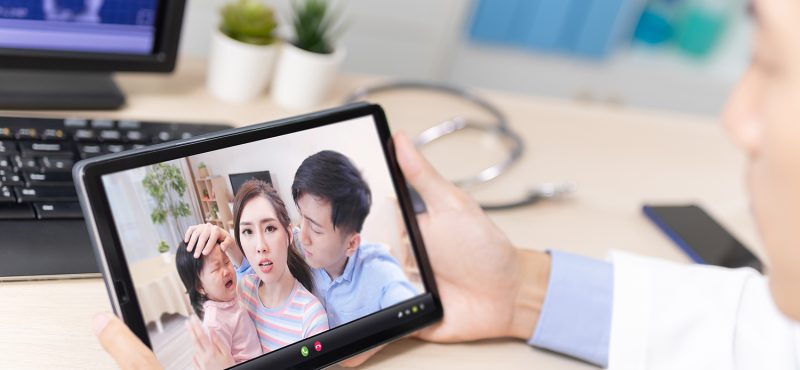The COVID pandemic has been a once-in-a-century health crisis, upending lives and livelihoods worldwide. With the need for safe access to healthcare during the crisis came a renewed focus on an emerging phenomenon: telehealth, or the use of the internet to provide quality care at a distance.
According to a new study, the use of telehealth to treat Medicare patients rose some 10,000% in the first six weeks of the pandemic. This exponential rise underscored a fundamental truth: the life-or-death importance of having a reliable broadband connection. Telehealth, then, is the crossroads between innovation and infrastructure.
Let’s explore the latest telehealth trends, and how its advanced technology is being supported by a powerful broadband network.
Why telehealth is a gamechanger
In its simplest form, telehealth harnesses communications technology to allow patients to consult a health professional remotely. The UnityPoint Heath network, for example, has created a virtual-health system that allows patients to access a wide range of services, including physical and mental health consultations, nutrition counseling and breastfeeding support. The system is always open and is available to anyone, inside or outside of the network.
Far from a simple phone call or videoconference, consultations can be wedded to always-on virtual technology that can monitor vital signs and other indicators and track habits by means of an app. For elderly loved ones living on their own, apps can keep an eye on their movements and warn if something goes awry. On a daily level, “smart pill boxes” make sure an often-complex combination of medications is taken correctly. The telehealth firm Trapollo, for example, has created a “hospital in the home” experience for patients to receive at-home medical care, replete with an app that allows for constant communication and monitoring by providers.
Telehealth means infrastructure
According to the white paper, “Advancing Health and Wellness Via the Smart Home,” the primary condition for home-based care services to succeed is adequate connectivity available to a critical mass of households. Fortunately, such conditions exist for millions of Americans due to a number of important initiatives:
- Years of investment in the expansion, upgrading, and maintenance of our broadband network by the broadband industry that has led to 80% of the United States now having access to gigabit speeds.
- The Federal Communication Commission’s recent decision to open up more bandwidth for Wi-Fi use, together with initiatives such as the Emergency Broadband Benefit Program to allow eligible households to receive discounts on broadband service, equipment rentals, and the purchase of a computer.
- Fixed wireless strategies that allow providers to “edge out” high-speed internet from urban to remote rural areas where fiber is too costly to install.
The future is now
Thanks to this robust broadband infrastructure, together with emerging 10G technology, telehealth is poised to take the leap from 2D to 3D into the world of holomedicine. This means 3D holographic consultations, 3D scans and anatomic imaging that make operations and procedures easier to visualize, as well as remote and robotic 3D surgery for students and specialists alike. With these emerging technologies, the barrier of distance has never been easier to overcome.
The technology already exists for many of these life-changing innovations, but they require high-speed internet to run. So far, the nation’s broadband infrastructure has met the challenge, but the proliferation of new tech will require the infrastructure to keep up.
Telehealth is here to stay
Despite its promise, telehealth was slow to catch on pre-pandemic because of policies that limited reimbursements, especially in rural areas. All of that has changed: during the third quarter of 2020, for example, virtual visits for ambulatory care were up by a year-over-year factor of 30. And based on the positive experience last year, some 53% of employers are offering more virtual options in this year’s benefits packages. This trend has also carried over into Medicare and with self-insured employers.
This upward trend in growth only underscores the need to get every single household in America connected to broadband. It is estimated that with a $65 billion investment, we can bring high-speed internet to the 13.4 million who currently lack it, this making the interactive, holistic world of telehealth available to all. To find out how you can get involved in the campaign for 100% connectivity, click here.
Broadband-Based Technologies
The interactive, holistic world of telehealth technology is both exciting and promising. But telehealth is only one sector that is being enabled by broadband infrastructure. To find out about more about other critical technologies that super-fast internet is making possible, read our “Future of the Internet” story.
